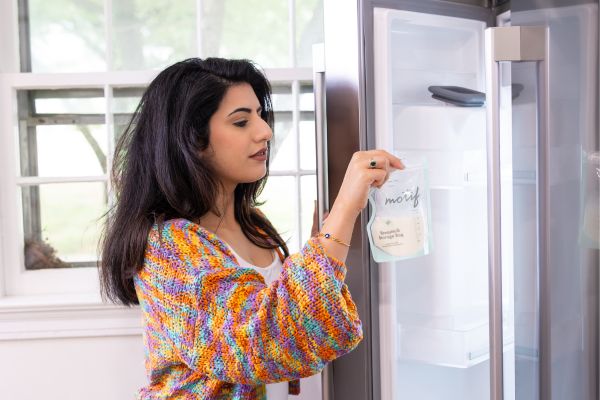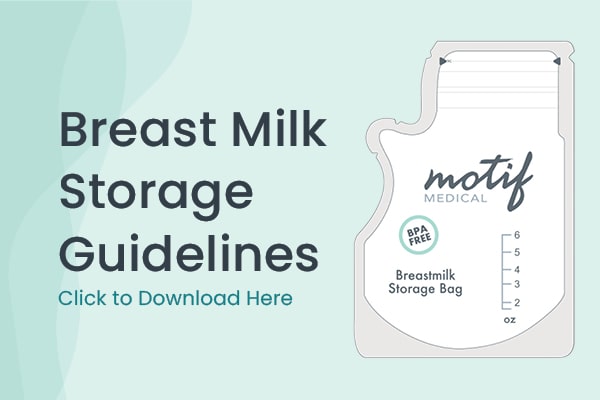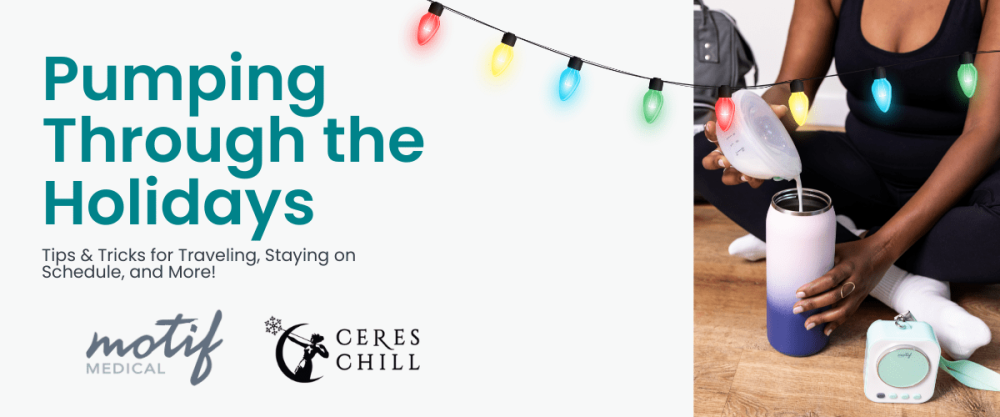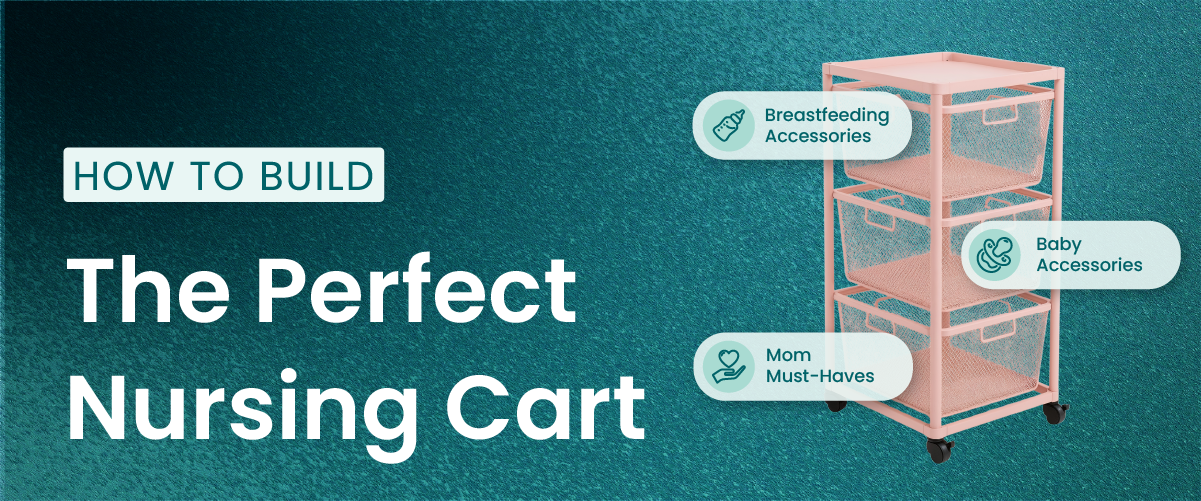Navigating Breastmilk Storage Tips
Breast milk is incredible, but storing it properly can feel like navigating a maze of conflicting advice. From combining milk from multiple pump sessions to knowing if it can be served cold, there’s no shortage of myths that create confusion and stress for new parents. In this guide, we debunk the most common breast milk storage myths with science-backed facts. Whether you’re prepping to return to work or just stashing away a few extra ounces you’ll learn practical evidence-based tips for storing, warming, combining, and using breast milk the right way.
Myth vs Fact: Breast Milk Storage
- MYTH: You can’t combine milk from different pumping sessions. 1, 2
- FACT: It is safe to combine milk from different pumping sessions, but consider the following:
Adding warm milk to cool milk can raise the temperature of the cool milk and increase the risk of bacterial growth. Best practice is to cool freshly pumped milk before combining it with previously chilled milk. Remember that breast milk can be stored at room temperature for 4 hours before moving it to the refrigerator or freezer.
Breast milk can be stored in the refrigerator for up to 4 days. If you combine milk that was pumped on different days, be sure to label the container with the date that the oldest milk was collected.
Evening and nighttime breastmilk contains higher levels of melatonin and tryptophan, both of which help promote sleep. These higher levels of sleep-inducing properties help support the development of your baby’s circadian (day/night) rhythm. It is safe to combine your AM and PM pumping sessions, but if your baby is struggling with sleep, consider separating your daytime milk from your nighttime milk and avoid feeding daytime milk during evening and overnight hours.
- MYTH: It’s ok to refreeze thawed breastmilk. 3
- FACT: You should never refreeze thawed breastmilk.
If the milk has thawed to a liquid state, it should not be refrozen. If the milk still has ice crystals, the CDC says it is safe to refreeze it.
Once breastmilk has been completely thawed, it should be used within 24 hours.
Recommended thawing methods include placing frozen milk in the refrigerator to thaw or holding the container of frozen milk under lukewarm running water. It can take 12 or more hours for breast milk to thaw in the fridge, so be sure to plan accordingly.
- MYTH: Breast milk from an unfinished bottle is good for 24 hours. 1
- FACT: You should never refreeze thawed breastmilk.
Milk from an unfinished bottle is at higher risk for growing harmful bacteria because it has come in contact with the baby’s mouth and saliva. If your baby doesn’t finish all of the breast milk from their bottle, it’s ok to save the unfinished milk and offer it to your baby again within 2 hours.
- MYTH: Breast milk must be heated before serving to your baby. 2
- FACT: It is safe to feed your baby cold or room-temperature breast milk.
This one is purely about preference. Most babies prefer their milk warm, especially if they are used to direct breastfeeding. However, many babies will accept breast milk straight from the refrigerator with no problem. Some babies will reject cold or room-temperature milk at first, but will accept it once they are older. So, if your little one rejects cool milk on the first try, consider offering it again in another month or two.
If your baby prefers warmed breast milk, place the container in a bowl of warm water or use a bottle warmer that is intended for warming breast milk. NEVER heat breast milk or formula in a microwave, as this can cause dangerous hot spots to form.
- MYTH: You need a huge freezer stash of breast milk before going back to work. 4
- FACT: You only need to store about 24 hours' worth of breast milk before going.
While social media has made huge freezer stashes trendy, storing excessive amounts of breast milk isn’t necessary. The average breast milk intake for healthy, term infants who are exclusively fed breast milk is between 20 oz and 25oz from one month up to six months. If your typical workday is 8 hours, then stocking 25 oz of pumped breast milk will cover your baby's needs for 2-3 workdays. As you pump at work, you’ll be replenishing your milk stash. Don’t feel pressured by images on your IG or TikTok feed. Feed your baby, not your freezer!
Having the right pumping equipment is essential for keeping up your breast milk supply when returning to work. A primary pump like the Motif Luna is ideal for optimizing pumping sessions. If your work environment requires pumping on the go, the Motif Roam and Motif Aura Glow combine convenience and performance to meet your pumping needs.
Breast Milk Storage Tips
Freeze Milk In Amounts That Match What Baby Drinks
Just because milk storage bags hold anywhere from 6 to 10 ounces doesn’t mean you have to store your milk in those amounts. Opt for freezing breastmilk in smaller portions since most breastfed babies take 2.5- 5 oz per feeding once they reach four weeks old. Freezing in larger amounts could result in waste. No one feels good about having to toss their liquid gold!
Lay Milk Storage Bags Flat to Freeze
This trick frees up valuable freezer space and makes it easier to organize your milk stash. Motif Milk Storage Bags have a lay-flat design and a convenient pour spout.
Once bags are frozen flat, they can be stacked inside gallon zip-top bags.
Breastmilk Can Be Stored in a Cooler for Up To 24 Hours
It’s all about the quality of your cooler and ice packs. The Luna Cooler Set comes with a long-lasting ice pack that fits nicely into the compact breast milk cooler. No matter how great your cooler and ice packs are, it’s still best to avoid prolonged exposure to intense car heat during the summer months.
Use the “First In, First Out” Motto
This means the first milk you use from the refrigerator or freezer should be the oldest milk. This practice helps you work through your stash so older milk doesn’t accidentally get missed. Many mothers prefer to feed their babies pumped milk that has never been frozen. This means they pump today for tomorrow’s bottles.
Pack Extra Pump Parts
Nothing is worse than going on an outing or arriving at work and realizing that you’ve forgotten one of your pump parts. Even if you remember to pack everything, duckbill valves and backflow diaphragms can become damaged while you’re away from home. Be prepared with an extra set that stays in your pumping bag or at work.
Information provided in blogs should not be used as a substitute for medical care or consultation.









